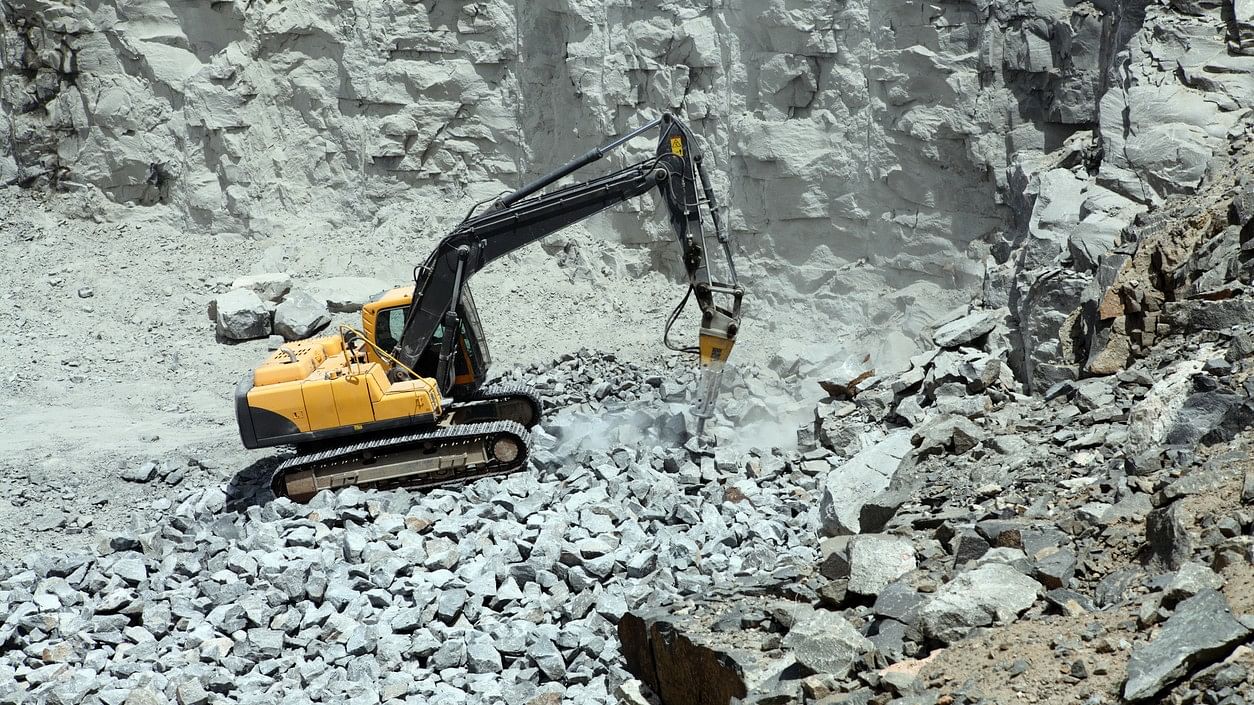
Representative image showing mining.
Credit: iStock Photo
Bengaluru: The Karnataka government has recommended first level clearance for mining close to the 1,200-year-old Kumaraswamy Temple in Sandur, Ballari district, even as an expert committee set up by the high court has sought a study in view of the possible environmental impact.
In a letter dated May 17, 2024 to the Ministry of Environment, Forest and Climate Change, the Karnataka Forest Department’s Additional Chief Secretary “requested to accord ‘In-Principle’ (Stage-1) approval” for mining the 70-acre forest of Kumaraswamy Betta.
DH on December 14, 2019 had written about the project, which threatens the Kumaraswamy Temple, believed to have been built in the 7th or 8th century CE. The project would have been inconceivable had the government not withdrawn a 1978 notification banning mining in 2 km radius of protected monuments.
The temple, also known as Parvathi Kartikeya Temple, is a monument protected by the Archaeological Survey of India (ASI). According to ASI rules, no mining is within 600 metres from such structures. Moreover, the temple has been part of the socio-cultural milieu of people in Sandur, attracting devotees from across the state.
DH sent a detailed query to Addition Chief Secretary, Forest, Ecology, Environment Department N Manjunath Prasad. There was no response at the time of going to the press.
The boundary of the mining lease approved by the government was within 400 metres of aerial distance from the temple. This prompted the activists in Sandur to oppose the project and demand restoration of the government’s 1978 notification banning mining within 2 km of the monument.
When the government did not listen, Sandur-based activist Sreeshaila Aladahalli moved the High Court of Karnataka in August 2023. Aladahalli contested the government’s decision to allow mining in the area, stating that such operations will threaten the temple. The court ordered an expert committee to assess the impact. A committee comprising experts from IIT Chennai, NEERI and others took up the study.
However, before the committee could submit the report, the Department of Mines and Geology held a meeting that clarified that a single-window committee of the government has “decided to restrict mining 600 metres away from the temple and mining leased area (66 acres)”. The state held a meeting following a direction from the ASI that mining should be restricted to 600 metres away from all sides of the temple and any directions from high court and Supreme Court have to be followed.
Activists noted that the government move to adhere to the 600-metre buffer zone was a step to bypass any recommendation to be made by the expert committee.
A senior official noted that mining activities include movement of large machinery and often involve blasting. “In such cases, even a 1 km buffer zone may be insufficient to protect a temple. The structure has already seen several rounds of repair works following a series of minor damage,” a senior official told DH.
Sources told DH that the committee set up following the high court order has recently submitted a preliminary report on two aspects: structural analysis and environmental impact. While the panel did not make a decision on structural safety, it said there are chances of the environmental impact affecting the monument. The two institutes involved have sought about Rs 55 lakh to carry out a detailed study. “The ASI has approved release of 40 per cent of amount as advance payment to the institutes,” the source said.